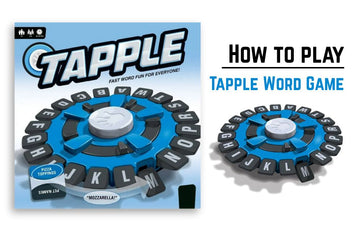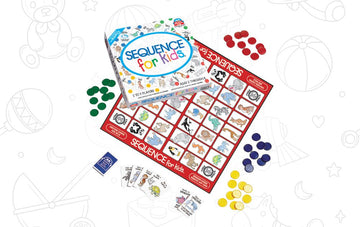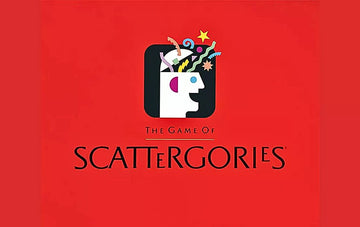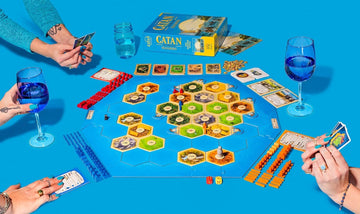Codenames
Welcome to our ultimate guide on Codenames! If you’re new to this exciting and strategic game or looking to sharpen your skills, you’ve come to the right place. In this detailed blog post, we will break down everything you need to know to play Codenames effectively, from game setup to advanced strategies. Whether you're gearing up for a family game night or preparing for a friendly competition, this guide will ensure you’re well-equipped to outsmart your opponents and become a Codenames champion!
What is Codenames?
Codenames is a popular board game designed for two or more players. Created by Czech Games Edition, it challenges players to use clever word clues to find hidden agents while avoiding the assassin. The game is known for its strategic depth and the need for both deductive reasoning and creative thinking. In Codenames, players work in teams, with one member acting as the spymaster and the others as field operatives.
Game Components and Setup
Before diving into gameplay, let’s go over the components and setup process for Codenames. Here’s what you’ll need:
Components
- 200 Double-Sided Codenames Cards: These cards feature 400 unique words, with each card appearing on both sides.
- 40 Agent Cards: 8 Blue Agents, 8 Red Agents, 7 Bystanders, and 1 Assassin.
- Key Card: A grid that shows which words are agents for each team, which are bystanders, and which is the assassin.
- Agent Card Stands: To hold the Agent Cards for each team.
- Timer (Optional): For managing the time during the game.
- Spymaster and Field Operative Cards: To designate roles.

Game Setup
-
Shuffle the Codenames Cards: Shuffle the 200 double-sided Codenames Cards and randomly select 25 cards. Arrange these cards in a 5x5 grid on the table. The remaining cards go back into the box.
Codenames Grid [Card 1] [Card 6] [Card 11] [Card 16] [Card 21] -
Divide into Teams: For a standard game, you need at least four players, with two players per team. One member of each team will be the spymaster, and the other members will be field operatives. The spymasters sit side by side, and the field operatives sit across from their respective spymasters.
-
Draw the Key Card: Shuffle the key cards and have the spymasters draw one. This key card indicates which words in the 5x5 grid are agents for the blue team, red team, bystanders, and the assassin. Place the key card in the stand so only the spymasters can see it.
Key Card Blue Team’s Agents Red Team’s Agents Bystanders Assassin -
Prepare Agent Cards: Place the 8 blue agent cards and 8 red agent cards in front of the respective spymasters. Place the 7 bystander cards and 1 assassin card nearby.
-
Determine the Starting Team: The key card will indicate which team starts the game. The team with the majority of agents (blue team has 9, red team has 8) goes first.
How to Play Codenames
Codenames is a game of deduction and communication. Here’s a step-by-step guide to how the game is played.
Objective of the Game
The objective in Codenames is to find all of your team’s agents before the other team does. You must also avoid picking the assassin, which would result in an immediate loss for your team.

Gameplay Mechanics
-
Spymasters Give Clues: On each turn, the spymaster provides a one-word clue and a number to their team. The clue should relate to one or more of their team’s agents on the grid. The number indicates how many words the clue pertains to.
- Example: If the clue is “Ocean 2,” and the words on the grid include “Shark” and “Wave,” the spymaster might be hinting at these two words.
-
Field Operatives Guess: Based on the clue, field operatives discuss and make guesses. They can guess up to the number given by the spymaster plus one additional guess.
- Example: If the clue was “Ocean 2,” and the field operatives think “Shark” and “Wave” are correct, they will select those cards. They may also make an additional guess based on their discussions.
-
Reveal and End of Turn:
- If the field operatives guess a correct agent, the spymaster covers the word with an agent card of their team’s color.
- If they guess a word that belongs to the opposing team, the word is covered with a card of the other team’s color, and the turn ends.
- If they guess a bystander, the word is covered with a bystander card, and the turn ends.
- If they guess the assassin, the game ends, and the opposing team wins.
-
Winning the Game: The game continues with teams alternating turns until one team identifies all their agents or the other team selects the assassin.
Example Turn
| Spymaster’s Clue | Number | Field Operatives’ Guesses | Result |
|---|---|---|---|
| “Space” | 2 | “Moon,” “Star” | Both are correct. |
| “Fruit” | 1 | “Apple” | Correct guess. |
| “Book” | 1 | “Page” | Bystander. |
Strategies for Success
To excel in Codenames, consider the following strategies:
-
Be Creative with Clues:
- Use abstract or broad clues to cover multiple words. For instance, if “Ocean” relates to both “Shark” and “Wave,” it’s a good clue.
-
Think Ahead:
- Anticipate the opposing team’s guesses and avoid clues that might mislead your team into picking an assassin or an enemy agent.
-
Communicate Effectively:
- As field operatives, discuss openly but avoid guessing on a whim. As a spymaster, keep your expressions neutral to avoid giving away any hints.
-
Manage Your Guesses:
- Use the additional guess strategically. Sometimes it’s better to stop guessing if you’re unsure rather than risk an incorrect choice.
-
Learn from Mistakes:
- Analyze past games to understand what worked and what didn’t. This helps improve your strategies for future games.
Advanced Tips for Playing Codenames
Once you’re comfortable with the basics of Codenames, you might want to explore these advanced tips to enhance your gameplay:
1. Using Metaphors and Associations
Experienced spymasters often use metaphors or indirect associations. For example, if the words “Cat” and “Milk” are on the grid, a clue like “Pets 2” might work because both words can be associated with pets.
2. Deception and Misdirection
Sometimes, spymasters might use misleading clues to confuse the opposing team or to protect their own agents. This can be risky but effective when used sparingly.
3. Cooperative Play Variations
For a change of pace, try the cooperative version of Codenames, where players work together to identify all agents before a set number of turns.
4. Playing with Larger Groups
For larger groups, consider breaking into smaller teams or playing multiple games in a tournament format. This keeps the game fun and competitive for everyone involved.
5. Using the Timer
Incorporate the sand timer to keep the game moving quickly and to prevent endless debates over clues. It adds an extra layer of challenge and excitement.
Common Questions About Codenames
1. Can you play Codenames with just two players?
Yes, Codenames can be played with two players, though it’s usually more enjoyable with at least four players. The rules include variations for 2 and 3 players.
2. What happens if a player accidentally reveals the assassin?
If a player picks the assassin, the game ends immediately, and the opposing team wins.
3. Are there any restrictions on the clues a spymaster can give?
Yes, clues must be one word and should not relate to the spelling or sound of the words on the grid. Clues can include numbers or abstract concepts as long as they relate to the meaning of the agents.





